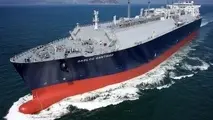Partial filling of tanks not substitute for proper maintenance

The UK P&I Club informed about an incident of flooding onboard a container ship, causing significant cargo damage, because of corrosion fractures in the ballast tanks. The Club provides a description of what happened and important lessons learned to prevent similar incidents in the future.
The incident
During cargo operations, the duty deck officer noticed the presence of a large quantity of water within one of the holds. He immediately informed the master and arrangements were made to transfer the water into a holding tank using the hold bilge pumping system. The depth of water was measured to be almost 6 metres and approximately 30 containers were fully or partially submerged. When the hold was pumped dry, the affected containers were discharged and jointly inspected at the Receivers premises where significant damage to the cargo was found due to sea water ingress through the container seals and vents. Investigation on board revealed that the flooding of the hold was caused by water ingress through corrosion fractures in the tank tops of two deep ballast tanks located at the port and starboard sides of the space.
Analysis
It was reported that the ballast tanks in way of the holds were routinely not filled to capacity as a precautionary measure. However, on this particular voyage, the subject tanks were filled to 100% capacity allowing water to leak through the defective tank top plating.
Due to the nature of container ship operations, it may be difficult for the crew to closely inspect and hydrostatically test hold boundaries on a frequent basis.
However, every opportunity should be taken to do this as operations allow so that any deficiencies are reported and rectified to maintain the watertight integrity of the holds. Cargo hold tank top base fittings are also vulnerable to fracture when containers are landed heavily during loading. In this case, the hold bilge high level alarms, which may have provided early warning of flooding, were also found to be out of order.
Lessons Learned
Inspection and hydrostatic testing of cargo hold boundaries with ballast tanks should be incorporated into the vessel planned maintenance system.
The precautionary partial filling of tanks is not a substitute for the proper maintenance of tank tops and the resulting free surface may adversely affect stability.
Cargo hold bilges should be sounded on a daily basis as weather permits and high level alarms, if fitted, regularly tested to maintain function.
Containers are not designed for immersion in water and flooding incidents of this nature can result in very high value claims.



